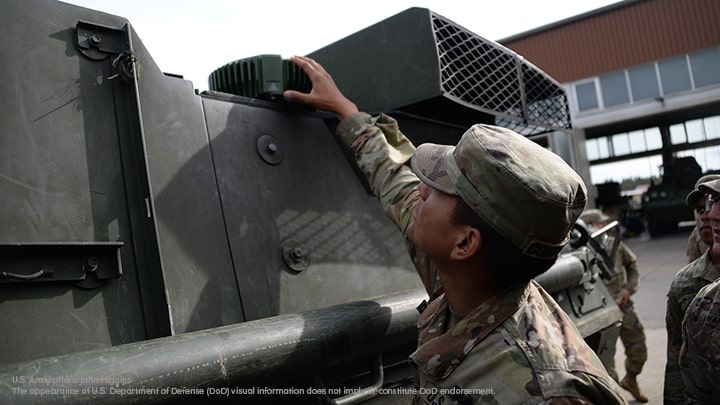

June 18, 2025
Will Thornton

You may sometimes see CRPA referred to as either controlled reception pattern antenna or controlled radiation pattern antenna. The terms are often used interchangeably, and both refer to the same essential concept: an antenna system that dynamically adjusts how it receives GNSS signals to defend against interference and protect navigation performance.
In simple terms, a CRPA protects against GNSS interference by electronically adjusting where the antenna “listens,” minimizing the impact of attackers and other sources of disruption. This makes CRPAs an important technology for achieving robust navigation and resilient PNT (Positioning, Navigation, and Timing), especially in defense, aerospace, and other mission-critical sectors.
Today, CRPAs are an essential part of systems that must operate reliably in contested environments—but it’s important to recognize that CRPAs are not a plug-and-play solution. Their performance depends heavily on design choices, integration, and precise testing.
A CRPA consists of several separate antenna elements, arranged in a specific pattern. Using techniques that can include beamforming and null-steering, the CRPA dynamically shapes its reception pattern to focus on valid satellite signals and suppress interference sources. The ability to suppress noise and focus on genuine satellite signals can improve the signal-to-noise ratio (SNR), which can allow CRPAs to continue operating in interference environments that would overwhelm conventional GNSS receivers.
Because of this, CRPAs are widely used in military platforms, aircraft, ships, and other critical systems where resilient navigation is essential.
It is important to note that the specific capabilities of each CRPA will vary. Null-steering – the ability to direct all antenna gain away from an unwanted source of noise – is a fundamental capability common to most CRPAs. Beamforming – the ability to increase antenna gain in the direction of genuine satellite signals – requires significant post-processing of signals.
While CRPAs offer powerful protection against GNSS interference, it’s essential to understand that they are not a guaranteed fix for all threats. Their effectiveness depends on several factors:
In short, CRPAs significantly improve PNT resilience but should be part of a layered defense strategy.
CRPAs are not one-size-fits-all. There is considerable diversity in CRPA systems, depending on mission needs and design trade-offs:
Choosing the right CRPA means carefully matching these parameters to the operating environment and mission profile.
Given their complexity, CRPA systems must undergo rigorous, realistic testing to validate performance and optimize system behavior. Basic functional testing is not enough: CRPA testing must accurately simulate real-world navigation warfare (NAVWAR) threats and operating conditions.
Effective CRPA testing should include:
Without this level of precise and robust testing, organizations risk deploying CRPA systems that could underperform or fail when needed most.
Controlled Reception Pattern Antennas (CRPAs) are a vital tool for achieving robust navigation and resilient PNT in the face of growing NAVWAR threats. They play a crucial role, but their success depends on careful system design, appropriate selection, and, most importantly, realistic testing under challenging conditions.
Organizations investing in robust PNT solutions should ensure they fully understand the capabilities and limits of CRPAs—and work with experts who can help them optimize and validate their systems.
If you’d like to find out more about CRPA design, testing, and integration, see our recent webinar. To find out more about Spirent’s dedicated, industry-leading CRPA test systems, contact us.